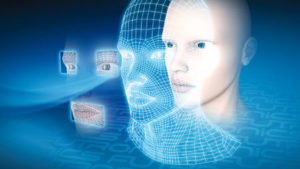 Apple’s adoption of facial recognition has put biometrics on the map, but smaller businesses have been utilising the technology for years.
Apple’s adoption of facial recognition has put biometrics on the map, but smaller businesses have been utilising the technology for years.
With the recent launch of the iPhone X, Apple has catapulted the use of biometric, facial recognition software into the mainstream. By allowing users to unlock phones using nothing more than their own face, millions of people will now have exposure to this kind of identification technology and, as always happens when the consumer market takes up the latest tech, businesses will then look to bring facial recognition and biometrics into their own software offerings. It is usually the case that the tipping point of a ‘new’ technology comes when it is adopted by a major company with huge market share, such as Apple, Samsung or Google. This tipping point arrives simply because they have the customer base that smaller companies don’t have, and can therefore change consumer behavior en masse.
With facial recognition reaching the mainstream as a verification enabling technology, we expect businesses to hijack the accelerated technological uptake and explore the benefits of incorporating biometrics in their service delivery. As an example of how we embrace new technology at an ever more rapid pace, consider the adoption of the telephone, which took 25 years to reach 10%; tablet devices, on the other hand, took fewer than five years to reach the same adoption rate. However, while Apple has spring-boarded facial recognition into the consumer spotlight, it has, in fact, already proven itself as an effective business tool.
PREMIUM CONTENT: The effect of blockchain on talent acquisition
Facial recognition in the staffing industry. One area where facial recognition has already proven to be extremely beneficial is in the staffing industry. Until recent years, the majority of timesheets were faxed to the recruiter once they were signed by the client at the end of each week, with all the associated issues of illegibility, paperwork going missing, late approvals delaying the payroll and human error in upload to the CRM. By incorporating biometrics into an app that enables temporary workers to check in and out by taking a geo-timestamped “selfie,” timesheets can be eradicated.
Historically, due to the manual nature of the recording process, with workers required to fill in a timesheet, time fraud could easily go unnoticed by a business with a large temporary employee base, or even let another worker check in and out on their behalf (“buddyclocking”). Implementing a workforce platform that incorporates facial recognition and biometrics removes this risk for a business as it requires the temporary to turn up in person and self-scan into and out of work. Considering that 29% of new recruits in the UK workforce are now employed on a temporary basis, this kind of technology could prevent thousands of instances of ID fraud every year saving money and time for businesses.
Not just as add-on. Of course, one consequence of a new technology exploding onto the scene is that many businesses simply try to jump on the bandwagon without working out the real value proposition for their end users. Those companies that have implemented biometric platforms from concept recognize that the system works best in conjunction with a geo-tracking feature, ensuring that the user has to be in the location where their face is being scanned. Approaching facial recognition as an add-on may fail to deliver any incremental benefit or improved customer experience, unless it is a fully integrated feature of an app or platform.








